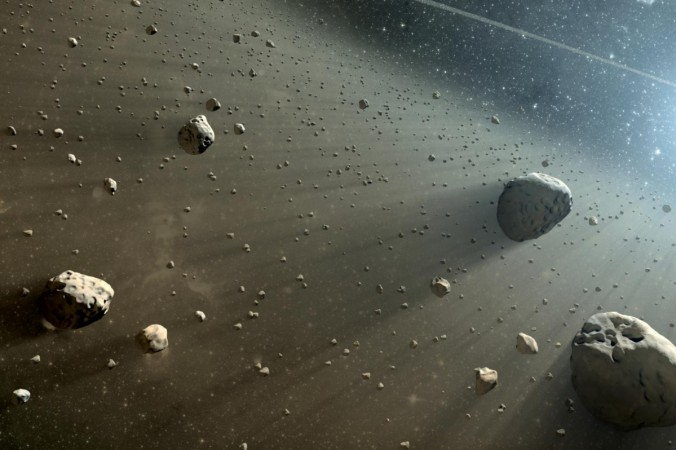
Chinese astronomers want to bring an asteroid for study, research, as well as "exploit its resources". The idea is to use small robots and drag a massive space rock down toward Earth.
The scientists recognise that this idea is a potential threat and that it sounds like a plot from a science-fiction story, but researchers believe that it can be realised, said Li Mingtao at the National Space Science Center under the Chinese Academy of Sciences.
Li and his team reportedly presented this idea in a contest for innovative future technologies held in Shenzhen, China, reports Xinhua, a Chinese news outlet.
The process of bringing an asteroid back to Earth could start, notes the report, with a spacecraft wrapping a bag over a small asteroid and simply bring it back to Earth. As it nears the Earth, the bag would unwrap a heat shield to slow it down during reentry. It will then be controlled and landed safely in a no-human zone, explained Li.
The chief engineer at the China Academy of Space Technology Huang Wei, reportedly said that the idea is creative and might even promote the development of space-based technologies.
The report mentions that many of the key technologies required for a mission like this still need to be developed. One of the biggest challenges in this mission would be to first find a suitable asteroid to lasso. Smaller asteroids, says Li are more difficult to discover. Ground-based telescopes are able to spot smaller asteroids only when they are close by.
Once the asteroid is picked and spacecraft are launched, Li says that the hardest challenge will still be the controlled descent of the asteroid during reentry. There needs to be a heat shield in place which can decelerate the fast-moving space rock and drop the speed of the incoming asteroid from an estimated 12.5 km per second to about 140 meters per second all the while directing it toward a designated area, notes the report.
The feasibility of a plan like this, notes Li's team, depends on the asteroid targeted. So far, researchers have set their eyes on a small asteroid of about 6.4 metres wide, about 100 million km away and it is expected to weigh several hundred tonnes.
The risk factor is something that is ever-present in a mission like this. Typically, a falling asteroid that weighs several hundred tonnes is not something that one would look forward to. If the asteroid lands in the wrong part of Earth, it could be catastrophic. If the systems in place to slow it down malfunctions, even when crashing into the designated spot, it could fall with cataclysmic force.
Despite the risk, the rewards are really high. For instance, Psyche 16 – an asteroid that NASA has set its sights on, orbiting between Mars and Jupiter is enormously valuable. It is estimated to be worth about $700 quintillion, and any country or individual who can get their hands on it will gain access to nearly unlimited wealth and power, notes a report by OuterPlaces.









